Green building practices have been gaining popularity all over the world due to their positive impact on the environment. Czech Republic is no exception when it comes to embracing sustainable construction practices. From the early days of building with natural materials to the use of innovative technologies, the country has come a long way in its commitment to reducing its environmental footprint.
The history of green building practices in the Czech Republic dates back to the early 20th century when architects began experimenting with natural materials like wood, straw, and clay. The country’s harsh climate and limited natural resources pushed architects to come up with innovative solutions that were not only sustainable but also energy-efficient.
The concept of sustainable development gained momentum in the Czech Republic in the 1990s, after the fall of communism. The country implemented building codes and regulations that prioritized energy efficiency and environmental considerations. This led to the development of a sustainable building industry that contributed to reducing the country’s carbon emissions.
Today, the Czech Republic is home to numerous energy-efficient buildings that showcase green architecture and emphasize energy conservation and sustainable design principles. The country has also implemented the use of sustainable materials in construction to reduce its ecological footprint and promote environmental sustainability.
- Sustainable construction practices in the Czech Republic have a long history and have been continuously developing.
- The country has implemented building codes and regulations that prioritize energy efficiency and environmental considerations.
- The use of sustainable materials and green architecture principles has resulted in numerous energy-efficient buildings in the country.
- Green building practices have contributed to reducing the Czech Republic’s carbon emissions.
- The country’s commitment to sustainable development continues to grow, with the integration of renewable energy sources in buildings across the Czech Republic.
Sustainable Development in the Czech Republic
The Czech Republic has made significant strides towards sustainable development in recent years. The government has implemented building codes and regulations that prioritize energy efficiency and environmental considerations. This has led to a rise in green building practices and a reduction in the carbon footprint of the construction industry.
One of the key drivers of sustainable development in the Czech Republic has been the adoption of the EU’s 20-20-20 targets, which aim to reduce greenhouse gas emissions by 20%, increase renewable energy usage by 20%, and improve energy efficiency by 20% by the year 2020. The Czech Republic has not only met these targets but has surpassed them, with current greenhouse gas emissions 34% lower than in 1990.
Building codes and regulations in the Czech Republic have been updated to incorporate sustainable construction practices and encourage energy-efficient buildings. The Energy Performance of Buildings Directive (EPBD) sets minimum efficiency standards for new buildings and requires retrofits to improve their energy efficiency. The Czech Republic has also implemented a Green Savings Program, which provides financial incentives for the construction of energy-efficient buildings and retrofits of existing buildings.
The country has also made efforts to promote the use of sustainable materials in construction. The Czech Green Building Council (CZGBC) has been established to promote sustainable building practices and provides certification for green buildings. The use of eco-friendly materials, such as recycled steel and wood, has become increasingly popular in construction projects throughout the Czech Republic.
The integration of sustainable development principles has not only been limited to new building construction but also to urban planning. The Czech Republic has implemented several initiatives to promote sustainable development in cities, including the creation of pedestrian and bike-friendly areas, the development of green spaces, and the reduction of vehicle emissions in urban areas.
The efforts made by the Czech Republic towards sustainable development have not gone unnoticed. In 2019, the country was ranked 15th out of 180 countries in the Environmental Performance Index (EPI), which evaluates countries’ efforts to protect the environment and human health.
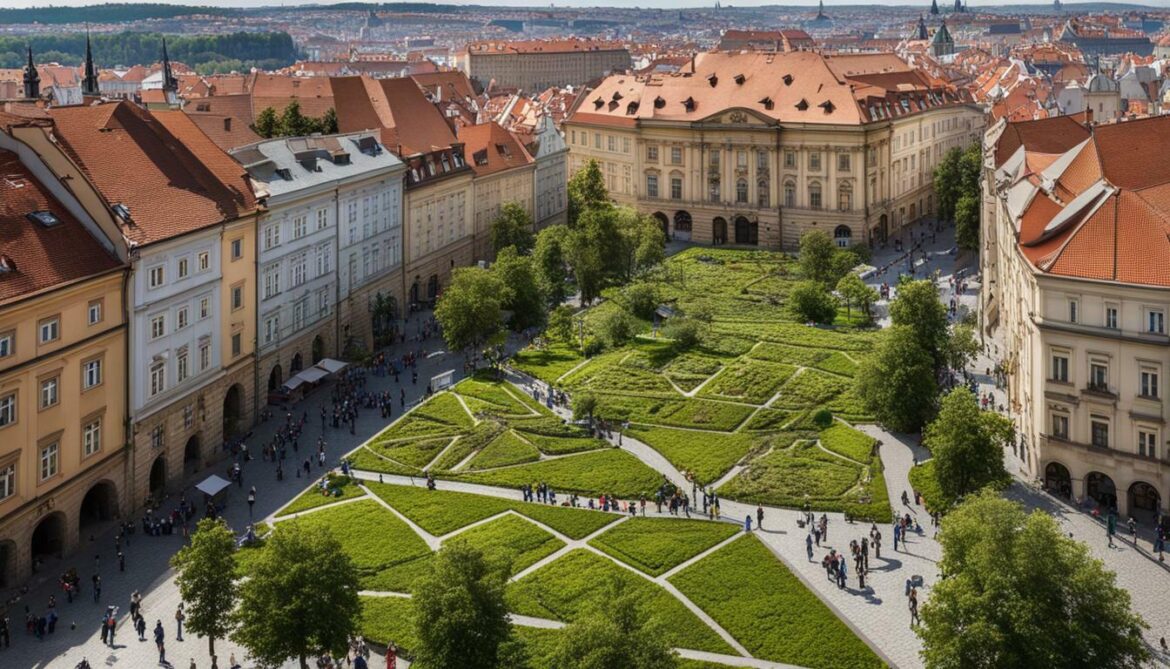
“Sustainable development is the pathway to the future we want for all. It offers a framework to generate economic growth, achieve social justice, exercise environmental stewardship, and strengthen governance.” – Ban Ki-moon
In conclusion, the Czech Republic has made impressive progress in promoting sustainable development through the implementation of building codes and regulations, encouraging energy-efficient buildings and the use of sustainable materials, and promoting sustainable urban planning. These efforts have had a significant positive impact on both the environment and human health in the country.
Energy-Efficient Buildings in the Czech Republic
In recent years, the Czech Republic has witnessed a surge in the popularity of energy-efficient buildings. Green architecture has become increasingly prevalent as architects and builders embrace sustainable design principles.
Energy-efficient buildings are designed to reduce energy consumption and minimize environmental impact. They incorporate innovative technologies and sustainable materials that contribute to their overall efficiency.
One notable example of energy-efficient architecture in the Czech Republic is the Passive House Institute. This building uses a variety of energy-saving technologies, including super-insulated walls and triple-pane windows, to minimize the need for heating and cooling.
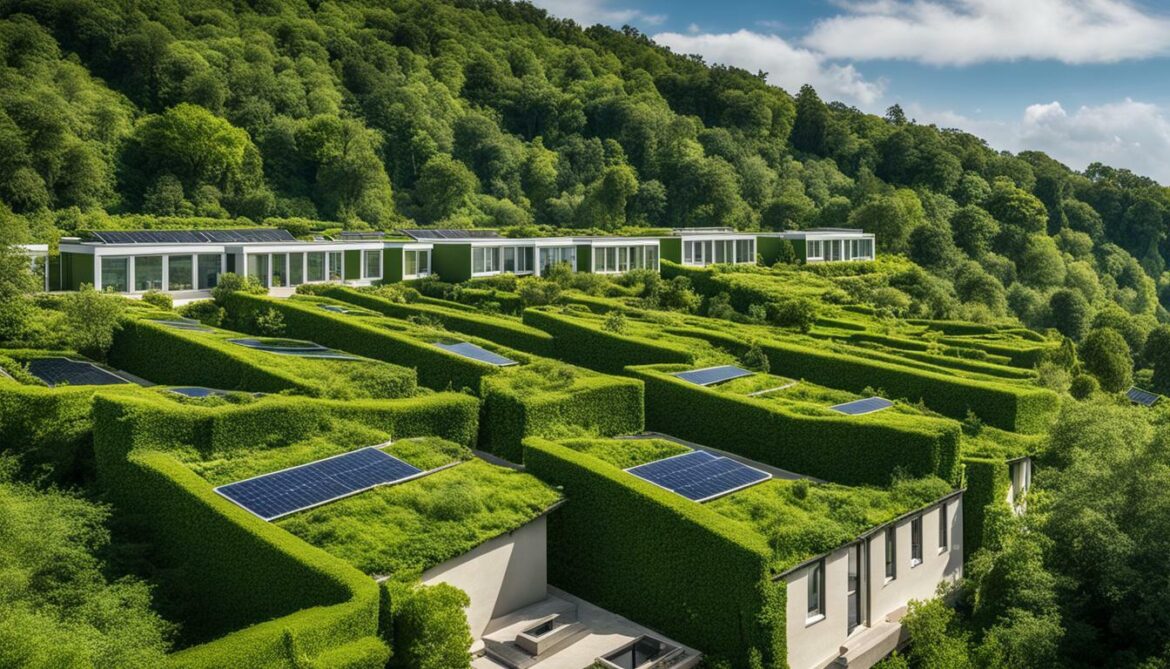
Green architecture in the Czech Republic also prioritizes natural light and ventilation. Buildings are designed to maximize the use of daylight and reduce the need for artificial lighting. They also incorporate natural ventilation systems that utilize fresh air and reduce the need for mechanical climate control.
Furthermore, energy-efficient buildings in the Czech Republic often incorporate renewable energy sources such as solar panels and wind turbines. These technologies harness the power of natural resources to generate clean energy, further reducing the overall environmental impact of the building.
Overall, the trend towards energy-efficient buildings in the Czech Republic is an exciting development in sustainable architecture. As more buildings embrace green design principles, we can look forward to a brighter and greener future.
Environmental Impact of Green Buildings
The use of sustainable materials in green buildings has a positive impact on the environment. Buildings account for a significant amount of greenhouse gas emissions, and by using sustainable materials, carbon emissions can be reduced. Sustainable materials also minimise the ecological footprint of buildings by using renewable resources and reducing waste.
Examples of sustainable materials used in green buildings include bamboo, recycled steel, and reclaimed wood. These materials have a lower carbon footprint compared to traditional building materials such as concrete and steel. Additionally, many sustainable materials are locally sourced, reducing the environmental impact associated with transportation.
The benefits of using sustainable materials extend beyond reducing environmental impact. Sustainable materials also offer economic benefits such as lower maintenance costs and improved longevity. As the demand for sustainable materials grows, the cost of these materials is decreasing, making them more accessible for building projects of all sizes.
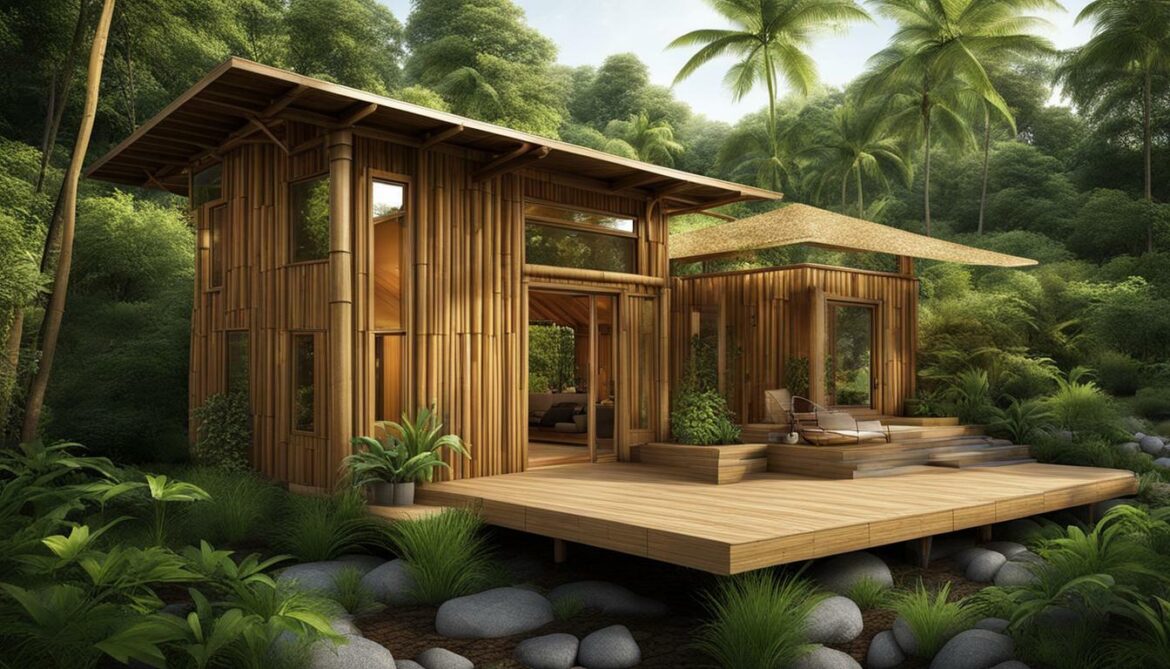
“Sustainable materials have a lower carbon footprint compared to traditional building materials such as concrete and steel.”
The use of sustainable materials is just one aspect of green building practices that can have a positive impact on the environment. By considering the full lifecycle of a building, from construction to demolition, sustainable practices can be implemented at every stage to minimise environmental impact.
Historical Green Building Projects in the Czech Republic
The Czech Republic has a rich history of green building projects that have prioritized sustainability and environmental impact. One notable example is the Energy Centrum in Prague, which was completed in 2011 and is the largest low-energy building in the country. This state-of-the-art structure boasts an impressive array of energy-efficient features, including photovoltaic panels, heat recovery systems, and innovative insulation solutions. The Energy Centrum is a prime example of how green architecture can be integrated into modern buildings without sacrificing design or functionality.
Another noteworthy example is the Municipal Library in Prague. Designed by renowned architect Jan Kaplický, this striking building was completed in 2009 and has since become a symbol of sustainable design in the city. The library’s futuristic exterior is made of a unique, environmentally friendly material known as chameleon skin, which adjusts its opacity depending on the time of day and the angle of the sun. The building also features a sophisticated ventilation system that utilizes natural cooling and heating methods to reduce energy consumption.

Other green buildings in the Czech Republic include the National Technical Library in Prague, which utilizes solar panels and a rainwater collection system to conserve resources, and the Parkhotel in Brno, which incorporates a biomass heating system to reduce its carbon footprint.
These historical green building projects in the Czech Republic have set a precedent for future environmentally conscious construction and serve as inspiration for architects and developers around the world. By showcasing the feasibility and benefits of sustainable design, these buildings encourage the wider adoption of green building practices and contribute to a more sustainable future.
Integration of Renewable Energy in Czech Buildings
The Czech Republic has made significant progress in integrating renewable energy sources into buildings. The adoption of solar panels, wind turbines, and other renewable technologies has enhanced the energy efficiency of buildings across the country, reducing their reliance on fossil fuels and minimizing their environmental impact.
One example of this integration is the use of solar panels on the roof of the DOX Centre for Contemporary Art in Prague. The solar panels provide a significant portion of the building’s energy needs, leading to a reduction in carbon emissions. Similarly, the Brno University of Technology Campus has installed a photovoltaic power plant on its roof, which generates electricity for its operation.
| Renewable Energy Source |
Building Application |
| Solar Panels |
DOX Centre for Contemporary Art |
| Photovoltaic Power Plant |
Brno University of Technology Campus |
In addition to solar panels, wind turbines have also been integrated into the design of some buildings. The Kladno Sports Hall, for example, features a wind turbine that generates electricity for the building’s operation.
Overall, the integration of renewable energy sources in Czech buildings serves as a testament to the country’s commitment to sustainable development and its efforts to reduce its carbon footprint.
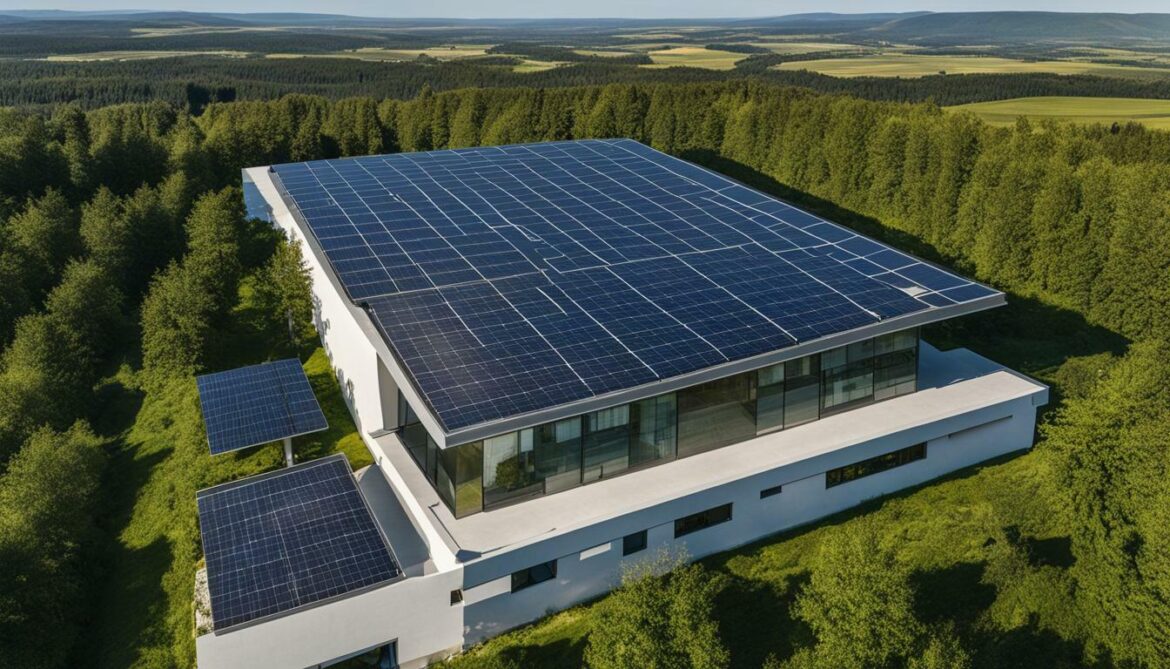
In conclusion, the Czech Republic has a rich history of sustainable development and green building practices. From the implementation of building codes and regulations to the integration of renewable energy sources, the country has shown a commitment to reducing its environmental impact.
The use of sustainable materials and energy-efficient designs has not only benefited the environment but also helped to reduce operating costs for building owners and occupants. With notable historical green building projects and a growing trend towards green architecture, the Czech Republic is showing leadership in sustainable development.
It is important to continue promoting and implementing green building practices to ensure a greener future for the country and the planet. By prioritizing sustainability in construction and development, we can minimize our ecological footprint and create healthier, more resilient communities.
Overall, the Czech Republic’s green building history and commitment to sustainable development serve as an inspiration and example for other countries to follow.
FAQ
What is the history of green building practices in the Czech Republic?
Green building practices in the Czech Republic have been steadily developing over the years. The country has embraced sustainable construction practices, focusing on energy efficiency and environmental considerations.
How has sustainable development been promoted in the Czech Republic?
The Czech Republic has made significant efforts to promote sustainable development. Building codes and regulations prioritize energy efficiency and environmental considerations, ensuring that new constructions adhere to green principles.
Are there any notable examples of energy-efficient buildings in the Czech Republic?
Yes, the Czech Republic has seen a rise in energy-efficient buildings. These structures showcase the principles of green architecture, utilizing sustainable design principles and energy conservation techniques.
What is the environmental impact of green buildings in the Czech Republic?
Green buildings in the Czech Republic have a positive environmental impact. The use of sustainable materials in these constructions contributes to reducing carbon emissions and minimizing the ecological footprint.
Are there any historical green building projects in the Czech Republic?
Absolutely! The Czech Republic boasts several notable historical green building projects. These architectural landmarks have embraced sustainable practices, setting a precedent for future environmentally conscious projects.
How is renewable energy integrated into buildings in the Czech Republic?
The integration of renewable energy sources is a growing trend in the Czech Republic. Solar panels, wind turbines, and other renewable technologies are being adopted to enhance energy efficiency and reduce reliance on fossil fuels.
What are the key takeaway points about green building in the Czech Republic?
In conclusion, green building practices have had a significant impact on sustainable development in the Czech Republic. The country’s efforts in promoting energy efficiency and environmental considerations have resulted in a positive impact on the environment.






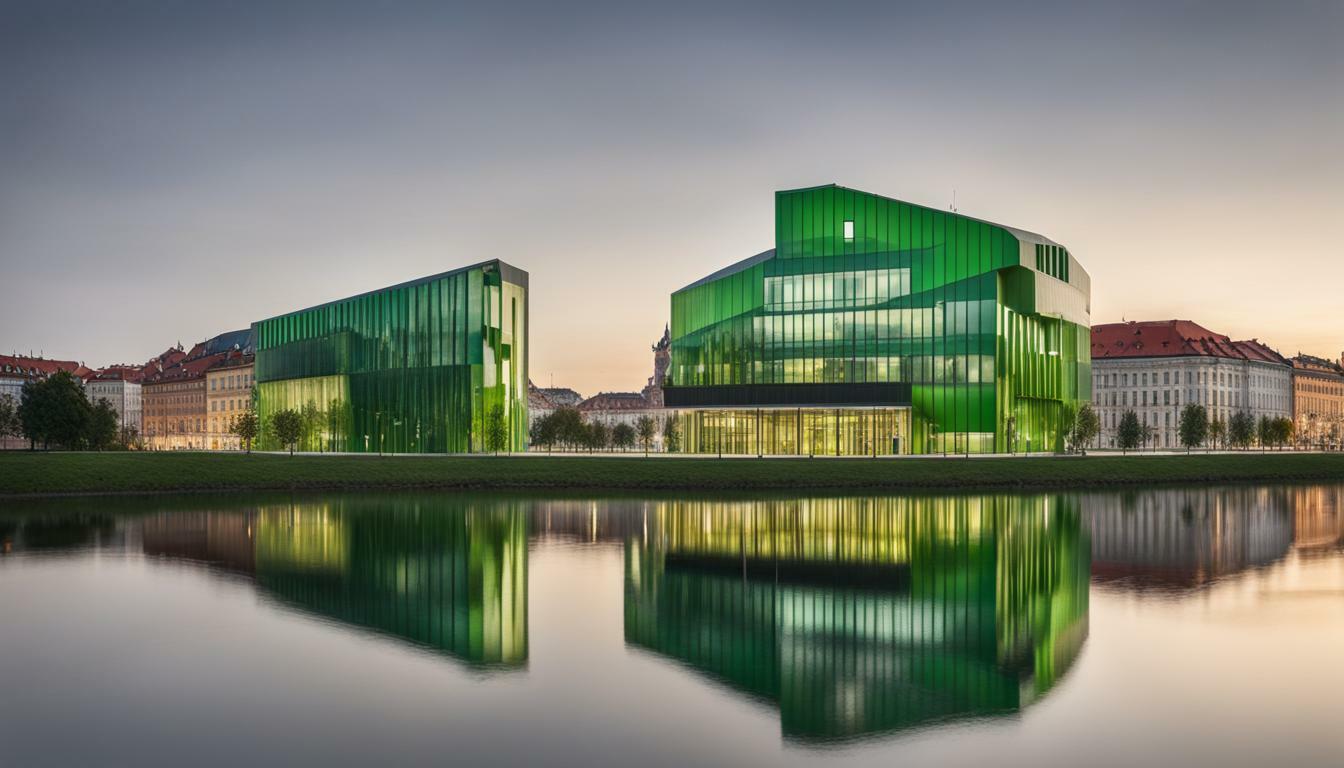
















Post comments (0)